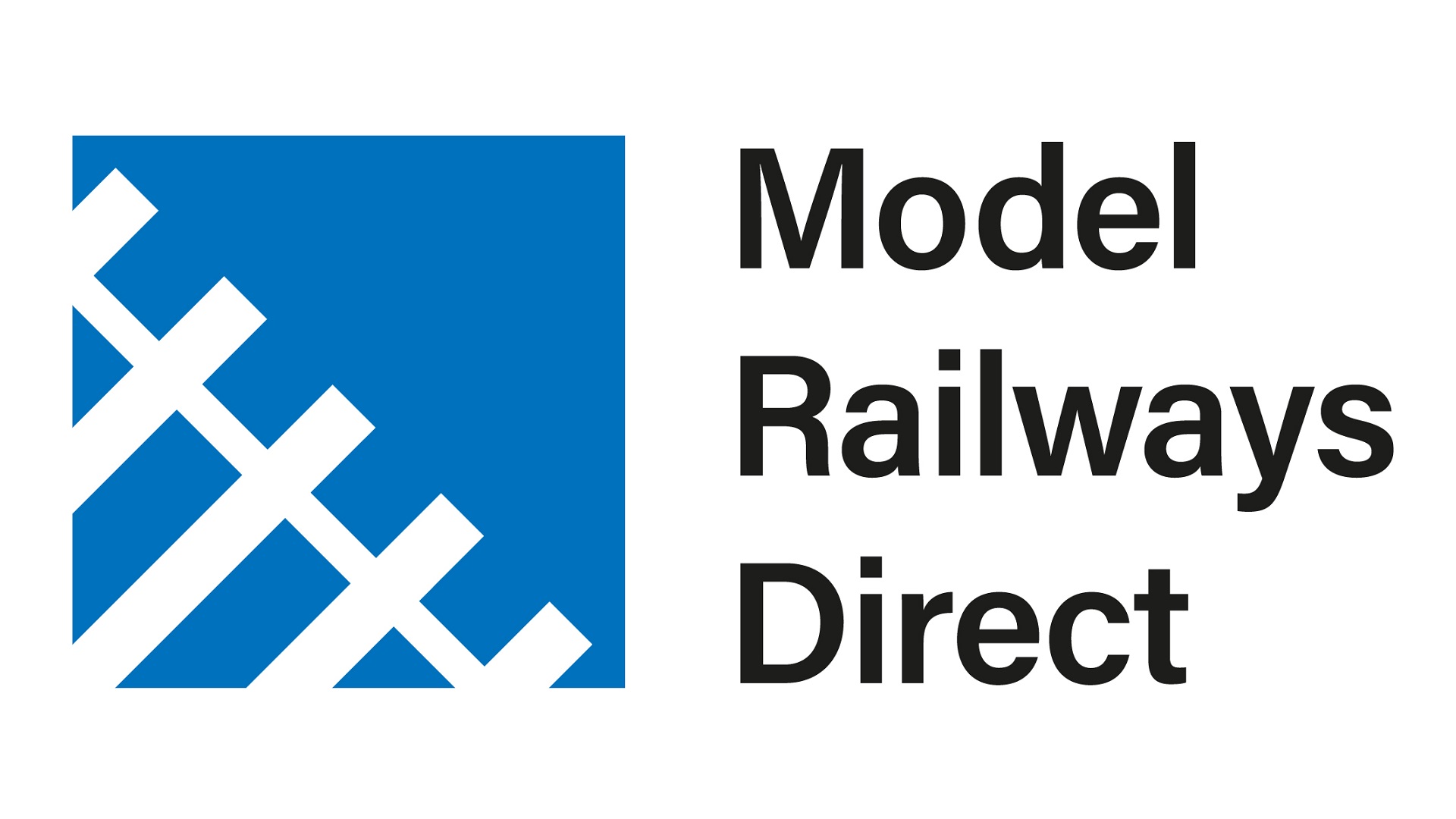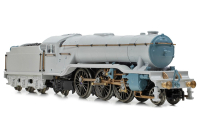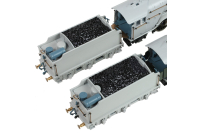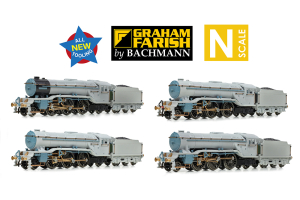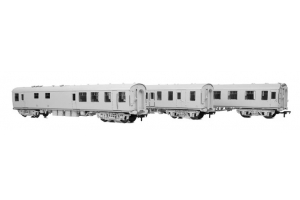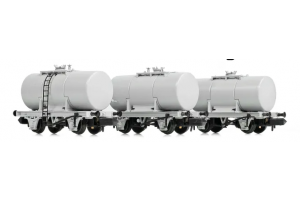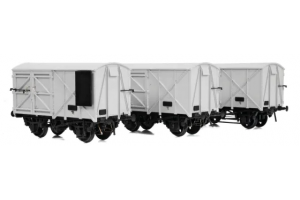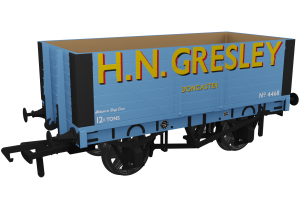
Bachmann has revealed that it has been working on a brand new model of the LNER V2 Class Steam Locomotive for its Graham Farish N scale range.
The V2 Class locomotive was one of the LNER’s most successful designs, commonly referred to as ‘the engines that won the war’ owning to their contribution to the war effort during the Second World War. The Class pioneer ‘Green Arrow’ entered traffic in 1936 and was named after the ‘Green Arrow’ express goods services, for which the type was designed, and in total 184 V2s were built with construction continuing during World War Two. Employing the 2-6-2 ‘Prairie’ wheel formation as opposed to the 4-6-0 arrangement more conventionally used for large mixed traffic locomotives in Britain, the V2s operated across most parts of the LNER network and were comfortable hauling both passenger and freight services.
N scale models of the V2 were previously produced by Graham Farish in 2004, these being the first new steam locomotives to be developed and released by the brand following Bachmann’s takeover of Graham Farish in 2000. However, given the significant advancements in British N scale models during the last two decades, that model no longer meets the requirements of the discerning N scale enthusiast. Therefore, the 2024 model has been designed from the rails up and owes nothing to its predecessor, employing the research that was used to bring new OO scale models of the V2 to the Bachmann Branchline range some three years ago.
The new Graham Farish model is constructed from a high-fidelity, injection-moulded bodyshell with separate smokebox and running plate. Additional detail parts are added individually, including the metal handrails, metal buffers and front lower lamp irons. The tender bodyshell is also injection-moulded, with three different versions depicted, each with separately fitted water scoop, tank filler, metal handrails and metal buffers, and a cast metal coal load. The detailed cab interior will be fully decorated and features boiler backhead controls and gauges, driver’s and fireman’s seats, brake and water scoop standards, and a hinged tender fallplate constructed from metal.
Along with the three tender types, there are also tooling options for the original monobloc cylinder castings or later arrangement with three separate cylinders, LNER or BR smokebox doors, and two types or rocker arm guides fitted to the cylinders. Named locomotives can be portrayed with nameplates either mounted on the running board or, in the case of ‘Green Arrow’, fixed to the smokebox sides.
Mechanically, the model is driven by a coreless motor with flywheel which is mounted into the diecast metal chassis block, with separate metal bearings fitted to each driving wheel axle and electrical pickup from each driving wheel and tender wheel. A Next18 DCC decoder socket and pre-fitted speaker can be found in the tender, which is connected to the locomotive with a discreet fixed drawbar with integral electrical connections. Each model will also be available with optional SOUND FITTED, employing a Zimo MS590N18 DCC sound decoder.
With production of the first models nearing completion, the livery samples for these will be revealed in the Autumn 2024 British Railway Announcements which premieres on Wednesday 7th August 2024, during which details including pricing and availability will be confirmed.
The all-new Graham Farish N Scale LNER V2 Class locomotives boast an impressive specification, full details of which are as follows:
Mechanism:
- Coreless motor with flywheel
- Electrical pickup from all driving and tender wheels
- Separate metal bearings fitted to each driving wheel axle
- Metal bearings fitted to each tender wheel axle
- Diecast metal chassis block
- Gearing arranged for prototypical running speeds and haulage capabilities
- 9mm (N gauge) wheels to NEM310 standards with authentic profile and detailing
- Sprung front pony truck
- Cartazzi truck with flanged wheelset (with side swing for operational necessity)
- Optional traction tyres fitted to the rear driving wheels (replacement wheelset without traction tyres supplied in the accessory pack)
- Valve gear of metal construction
- Discreet fixed locomotive to tender drawbar with integral electrical connections
- Coupling pocket to NEM355 standards fitted to the front pony truck
- Removable coupling pocket to NEM355 standards fitted to the tender chassis
- Designed to operate on curves of second radius (263.5mm) or greater
Detailing:
- High-precision, injection-moulded bodyshell, running plate and tender with separately fitted details parts including lower front lamp irons, lubricators, reverser and sandbox fillers
- Separately applied metal components including handrails, lifting eyes, buffers and sand pipes
- Water scoop, tank filler, cylinder and rear lamp iron added to the tender as separate parts
- Tender fitted with metal coal-effect load
- Detailed cab interior including boiler backhead controls and gauges, driver’s and fireman’s seats, brake standard and water scoop standard
- Hinged and posable metal fall plate between the locomotive and tender
- Each model supplied with a full set of accessory parts including dummy coupling hooks, coupling bash plate, guard irons, cylinder drain cocks, and cab & tender doors
DCC:
- Next18 DCC decoder interface located in the tender
Sound:
- Speaker installed in the tender of all models for optimum sound reproduction
- Zimo MS590N18 DCC Sound Decoder fitted to SOUND FITTED versions
- Sound files produced specifically for the Graham Farish LNER V2 Class using recordings from real locomotives
- SOUND FITTED models operate on DCC and Analogue control as supplied
Livery application:
- Authentic liveries applied to all models
- Multiple paint applications employed on each model using LNER and BR specification colours
- Logos, numerals and text added as appropriate using multi-stage tampo printing using authentic typefaces, logos and colours
- Named locomotives are supplied with pre-fitted, fully decorated nameplates
